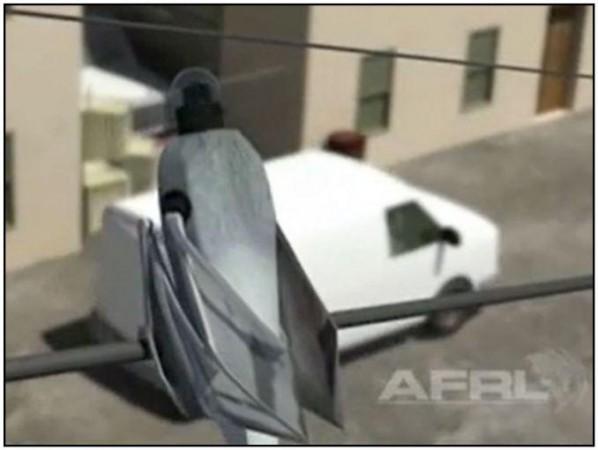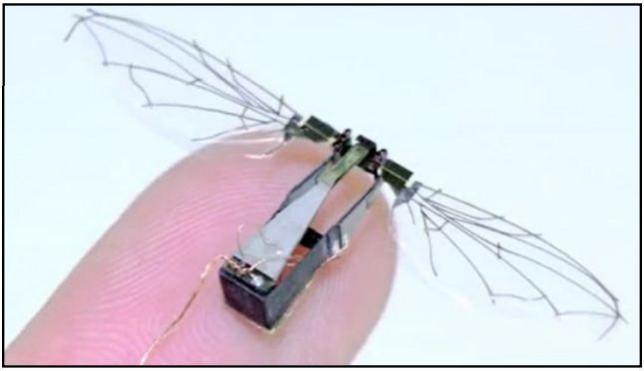Drone technology has come a long way. From remote surveillance to unmanned warfare, the US has used and continues to use, drones for a wide range of uses. Now, the US Air Force is developing 'microdrones' that are bird-like and are remote-controlled. What makes these new drones unique is their ability to 'flap' their wings, just like real birds, and change direction mid-way.
The Air Force Research Laboratory (AFRL) recently announced that it is collaborating with California-based Airion Health LLC to develop a prototype of the micro air vehicle (MAV) that can mimic bird and insect flight. When complete, the drone will be capable of six degrees of flight (6DOF)—be able to move freely in three dimensions.
"Practical applications after successful implementation of the invention include, but not limited to, in-the-open surveillance, aerial swarm operations, and battlefield situational awareness," said a statement by AFRL. Specifics such as the weight and size of the MAV are yet to be disclosed.
Emulating Bird and Insect Flight

Earlier this year, AFRL inked a non-exclusive patent license agreement (PLA) with Airion to facilitate the licensing of the inventions owned by the government. The drone is a result of two approved patents—"Method for Shaping Wing Velocity Profiles for Control of Flapping Wing Micro Air Vehicles" (2014) and "Methods and Apparatus to Achieve Independent Six-Degree Control of Flapping Wing Micro Air Vehicle" (2016).
According to the AFRL, the drone will be a biomimetic micro-robotic aircraft. Biomimetics refers to the man-made/engineered emulation of biochemical processes found in nature such as flight. The microdrone will employ two actuators for its maneuverability and be able to change velocity without much reliance on a high-performing computer.
Actuators are mechanical or electro-mechanical components within a device that help it attain physical movements through the conversion of energy, mostly air, hydraulic or electrical energy, into mechanical. Actuators require a control signal to get them to do something, and a source of energy to be able to do it. Closing of valves in a machine and automatic doors are some examples of actuator-led movements.
"Controllable forces would be generated by the wings based on position and velocity profiles, resulting in time-varying wing upstrokes and downstrokes, which, at times, may be asymmetrical," explained the release by the US Air Force's elite research body.
Achieving Six Degrees of Flight
The AFRL has been engineering mini-robotic aircraft to imitate flight attributes of birds and insects for several years. And the use of biomimetics has enabled the achievement of advanced maneuverability. However, making man-made mechanisms achieve flight movements of birds and insects that are instinctive comes with its set of challenges. "One such challenge is designing an aircraft capable of six-degrees-of-freedom flight with only two actuators," noted the release.

This is where the patents come into play. With their application, the MAVs will be able to achieve 6DOF. A simple explanation of 6DOF is that a rigid body must be able can change positions up or down, left or right, and forward or backward. Planes are a good example of this.
Airion will "develop, manufacture, and market the invention." According to the terms defined in the PLA, the company is expected to produce a feasible prototype within 15 months. Joshua Laravie, Technology Transfer Specialist and Domestic Alliance Program Manager, Aerospace Systems Directorate, said in the statement, "We were excited to license our technology to a small business that was building strategic relationships in the drone industry. [We] are looking forward to supporting their efforts to commercialize an AF technology."












!['Had denied Housefull franchise as they wanted me to wear a bikini': Tia Bajpai on turning down bold scripts [Exclusive]](https://data1.ibtimes.co.in/en/full/806605/had-denied-housefull-franchise-they-wanted-me-wear-bikini-tia-bajpai-turning-down-bold.png?w=220&h=138)
![Nayanthara and Dhanush ignore each other as they attend wedding amid feud over Nayanthara's Netflix documentary row [Watch]](https://data1.ibtimes.co.in/en/full/806599/nayanthara-dhanush-ignore-each-other-they-attend-wedding-amid-feud-over-nayantharas-netflix.jpg?w=220&h=138)



